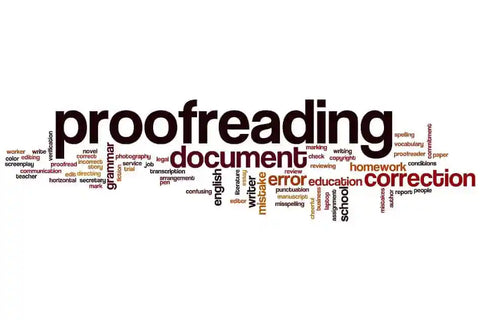Varying the Structure of Sentences for an Interesting Thesis or Dissertation
As long as the meaning is clear, the problems, concepts and details described and discussed by academics and scientists may be intellectually stimulating regardless of exactly how individual sentences are constructed. However, such material can sometimes come across as dull, even to experts in a field, when there is little variety in the structure of an author’s sentences. This tendency for uniform sentence structures is often particular prevalent in theses and dissertations, where scholarly authors new to writing a long research-based document and perhaps relatively new to writing in the English language as well are faced with reporting reams of data. Clinging to the simplest of sentence structures may seem safe, but the result is usually monotonous and certainly limits a student’s ability to express thoughts and analyses. The sentence types described below with examples may therefore prove helpful in achieving a more sophisticated level of textual communication as well as increasing the variety that tends to hold the interest of readers.
• A compound sentence consisting of two independent clauses (simple sentences) joined by a comma and a coordinating conjunction: ‘I wrote the thesis, and my editor did the formatting.’ ‘I conducted the research, but I hired a statistician to analyse the data.’ ‘I needed a new approach, so I combined the methodology used in two recent studies.’
• A compound sentence consisting of two independent clauses joined by a semicolon: ‘I conducted the research; a statistician analysed the data.’ ‘I needed a new approach; my solution was to combine the methodology used in two recent studies.’
• A compound sentence consisting of two independent clauses joined by (1) a semicolon, (2) an adverb or an adverbial or transitional phrase and, in most cases, (3) a comma: ‘I needed a new approach; however, I was also expected to implement the methods described in two recent studies.’ ‘I combined the approaches used in two recent studies; as a result, the results I achieved were very different.’
• A complex sentence consisting of an independent clause followed by a dependent clause, perhaps with a comma between the clauses: ‘I knew I had passed the examination because my external examiner told me how pleased she was with the way I had implemented her methodology.’ ‘I needed a new approach, although in the end I decided to combine the methods from two recent studies.’ Note that the dependency of the second clause in each case is indicated by a word that is sometimes called a dependency marker – ‘because’ in the first example and ‘although’ in the second.
• A complex sentence consisting of a dependent clause followed by an independent clause. The dependency markers feature here as well, and the comma is standard after the dependent clause: ‘Although both methods had already been used, the combination produced unexpected results.’ ‘Because my external examiner told me how pleased she was with the way I had implemented her methodology, I knew I had passed the examination.’
• A sentence, whether simple, compound or complex, that is embedded with an essential phrase or clause. Essential phrases and clauses are, as their name implies, necessary to convey the overall meaning of the sentence. In my example here, the prepositional phrase ‘with additional controls’ is necessary to the meaning of the sentence, so it is an essential phrase and requires no special punctuation: ‘I designed my methodology with additional controls to ensure that the results would be more conclusive.’
• A sentence, whether simple, compound or complex, that is embedded with a nonessential phrase or clause. Unlike an essential phrase or clause, a nonessential phrase or clause can be removed from a sentence without compromising the essential meaning of the entire sentence. In my example here, the relative clause ‘who is the real expert’ provides interesting additional information, but it is not vital to the sentence’s main meaning, so it is a nonessential clause, and notice that a nonessential phrase or clause is surrounded by commas: ‘The advice of my supervisor, who is the real specialist, was invaluable as I designed my methodology.’
Why Our Editing and Proofreading Services?
At Proof-Reading-Service.com we offer the highest quality journal article editing, dissertation proofreading and online proofreading services via our large and extremely dedicated team of academic and scientific professionals. All of our proofreaders are native speakers of English who have earned their own postgraduate degrees, and their areas of specialisation cover such a wide range of disciplines that we are able to help our international clientele with research editing to improve and perfect all kinds of academic manuscripts for successful publication. Many of the carefully trained members of our manuscript editing and proofreading team work predominantly on articles intended for publication in scholarly journals, applying painstaking journal editing standards to ensure that the references and formatting used in each paper are in conformity with the journal’s instructions for authors and to correct any grammar, spelling, punctuation or simple typing errors. In this way, we enable our clients to report their research in the clear and accurate ways required to impress acquisitions proofreaders and achieve publication.
Our scientific proofreading services for the authors of a wide variety of scientific journal papers are especially popular, but we also offer manuscript proofreading services and have the experience and expertise to proofread and edit manuscripts in all scholarly disciplines, as well as beyond them. We have team members who specialise in medical proofreading services, and some of our experts dedicate their time exclusively to dissertation proofreading and manuscript proofreading, offering academics the opportunity to improve their use of formatting and language through the most exacting PhD thesis editing and journal article proofreading practices. Whether you are preparing a conference paper for presentation, polishing a progress report to share with colleagues, or facing the daunting task of editing and perfecting any kind of scholarly document for publication, a qualified member of our professional team can provide invaluable assistance and give you greater confidence in your written work.
If you are in the process of preparing an article for an academic or scientific journal, or planning one for the near future, you may well be interested in a new book, Guide to Journal Publication, which is available on our Tips and Advice on Publishing Research in Journals website.







